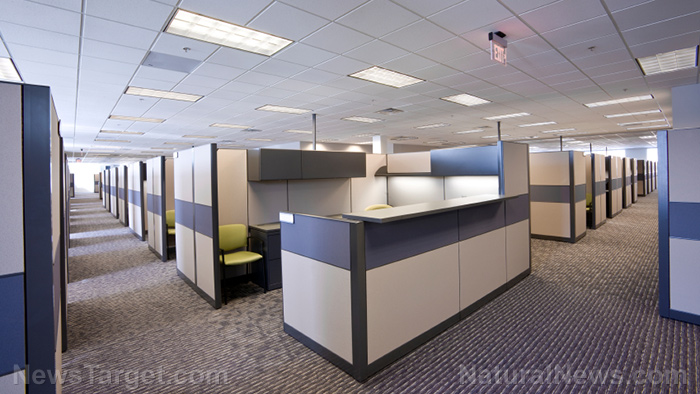
Specifically, it’s the recirculated air in the office that muddles your thinking. A report by the New York Times reveals that indoor air plays a significant role in brain function, such as decision-making and problem-solving.
While breathing is mostly passive – except for when a person needs to control it, such as when singing or talking – it’s a function that's crucial for survival. A person draws oxygen-rich air into the lungs during inhalation and expels carbon dioxide as a waste product.
High concentrations of carbon dioxide can displace oxygen in the air, increasing the risk of asphyxiation. However, recent studies – eight published in the last seven years – have revealed that even at levels far lower than what can cause suffocation, carbon dioxide can still starve the brain of oxygen.
Better buildings make for poorer airflow
Many buildings designed in the latter part of the 20th century include space-conditioning systems, which provide heating and cooling in many of these spaces. These systems also help reduce energy consumption. At present, space-conditioning systems account for just 17 percent of electricity use in commercial buildings.
However, these improvements have made it easier for gases and other substances to build up inside these spaces. Scientists and ventilation experts are becoming concerned about the amount of “worrisome substances” in indoor air, especially those emitted by office supplies, new furniture and even carpets. Research has linked exposure to indoor air pollutants to respiratory problems and certain cancers.
Carbon dioxide is often used as a surrogate for indoor air pollutants because it is easy to measure. Considered relatively harmless in small quantities, it is also used to measure the ventilation rate in an area. For instance, a room with 1,200 parts per million of carbon dioxide is considered to have poor ventilation.
“It’s long been thought of as an indicator of how bad the air in a space might be,” explains Brent Stephens, a professor of architectural engineering at the Illinois Institute of Technology.
However, recent findings about carbon dioxide and its effects on brain function are beginning to change how it's perceived.
Let some fresh air in
Multiple studies have shown that inhaling high levels of carbon dioxide can reduce neuronal activity, constrict blood vessels in the brain and decrease the amount of communication between brain regions. How carbon dioxide affects the brain in lower amounts, however, hasn’t been studied that much. (Related: Greener and cleaner: Can “green” roofs planted with vegetation minimize indoor air pollution?)
An earlier study published in the journal Environmental Health Perspectives found that exposure to carbon dioxide concentrations as low as 600 ppm can begin to affect a person’s cognitive abilities. Researchers reported that the higher the levels of carbon dioxide in the air, the worse the study participants performed on tests. The scores of individuals exposed to 2,500 ppm of carbon dioxide were significantly lower than the scores of those exposed to lower concentrations.
Researchers from Harvard University also reported similar results in 2016. In their study, they had office workers come to a simulated workplace to take a problem-solving test while being exposed to various concentrations of carbon dioxide and volatile organic compounds. They found that participants’ test scores declined as carbon dioxide levels rose. In addition, their problem-solving abilities were also affected by the levels of volatile organic compounds.
“What we saw were these striking, really quite dramatic impacts on decision-making performance, when all we did was make a few minor adjustments to the air quality in the building,” said Joseph Allen, a professor at the Harvard T.H. Chan School of Public Health and the lead author of the study.
Of course, this isn’t to say that you should avoid small rooms – or your office – like the plague. But when you do need to hunker down in a small room, it might be best to crack open a door (or a window), let some fresh air in and get your ideas flowing.
Sources include:
Please contact us for more information.























